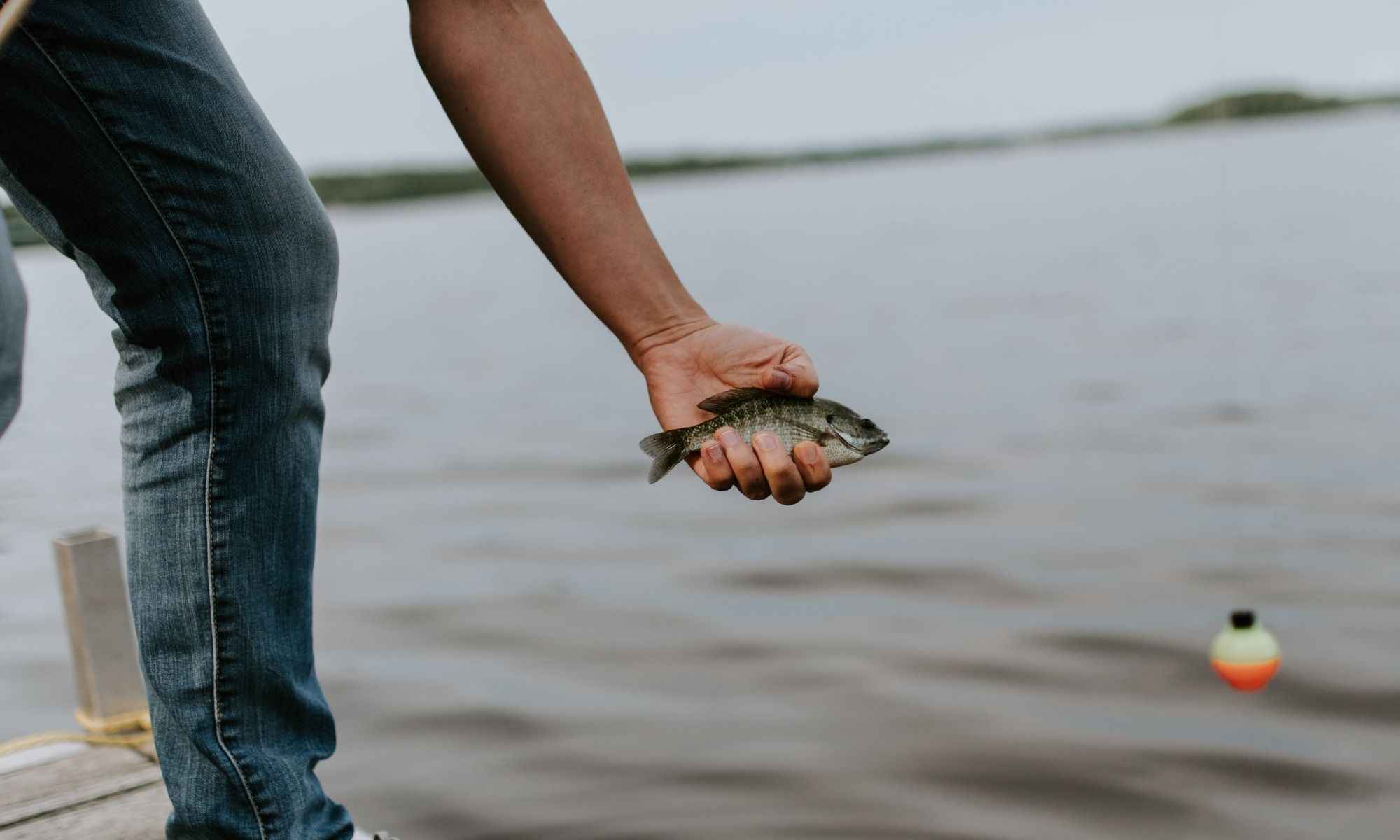10 Ways to Catch Bluegill
Being an easily caught fish, the bluegill is a favorite for many young anglers. Here are some of the ways to catch them.

A common misconception for many new anglers is that the sport revolves around reeling in both the biggest and rarest fish in the area. Though catching the biggest prize of the day is in and of itself quite fun, fishing is more to it than just that. Fun is very subjective and can mean a lot of different things to a lot of different people. For others, it can be about exploring nature and capturing the scenic views first-hand. Other people enjoy the calm atmosphere of waiting for a bite. For a lot of people just catching a fish, regardless of weight or rarity, is enough to make a trip worth it.
Through the years, many fish have been a staple catch for many anglers. Whether it’s crappie, bass, and even carp, there are a lot of common fish found across the United States that anglers just love to fish. Another common fish that’s very popular among anglers is the bluegill. Found in almost every pond, lake, river, or canal in the country, these fish are always stocked for anglers to catch.
There are many reasons as to why this fish is so popular; one being that it’s great to eat. They’re also widespread and can be caught in all seasons. They only weigh a couple of pounds and bite easily. Many anglers credit the bluegill as their first catch. Older anglers also catch bluegill as a fly fishing practice. There are a variety of ways to catch this popular gamefish. To show how varied bluegill fishing can be, here are some of the ways anglers over the years have been catching them.

Catch a Bluegill in 10 Ways
1.Spin Casting
Spinning is when anglers use a spinning lure with bait attached in order to entice fish. Depending on the location, type of lure, and target, there will be differences in equipment being used. There are also two types of rules that can be used, namely the open and closed faced fishing rods. The main difference between the two is that open-faced reels are harder to use but are consequently more accurate.
Even when spin casting, there are two more specific ways to do so, by walking the dog and bottom bouncing.
2. Walking the Dog
As its name suggests, walking the dog is a fishing technique that focuses on lure retrieval as a way to catch fish. When reeling in a lure, make sure to give it a rhythmic twitch. It’s also good to make sure that there’s a line-slack before every jerk, in order to give it a life-like swimming motion. Each jerk makes a zigzag-like motion where the lure alternates from each side.
3. Bottom Bouncing
This technique is usually used by those on a drifting boat. Bottom bouncing is when an angler lets their lure drift to the bottom of the waterbody while having their rod at a 45-degree angle. As they freely move down the water, the lure will naturally bounce around the water. The line, however, shouldn’t be too loose but instead should be tight enough to faintly feel the weight. This technique can also be used in slowly moving rivers, as well as both shallow and deep water, making it a versatile technique.
4. Fly Fishing
Fishing with flies is the most common method of catching bluegill and fishing anything and everything in general. It’s the act of fishing using an artificial fly in order to catch fish. Though a common technique, it can be tricky to master. People who have gotten used to fly fishing can take advantage of its accuracy, leading them to be able to set a fly in tight spaces. The most important thing for a fly fishing angler is being able to properly cast the weighted fly. This technique is the most common and popular way to introduce kids to fishing. Catching bluegill is also a way anglers can practice fly fishing, in order to get used to the feel and move on to even bigger fish.

5. Trolling
Since bluegill are abundant and good to eat, trolling may be a good way to catch them. Trolling is the act of setting up multiple bait in the rear end of the boat while going at a modest pace of 1 mph to 2.5 mph. The slow pace will pull the lures in such a way that it mimics a school of fish. It’s a great fishing technique that covers a lot of ground in wide areas such as lakes and bayous. Keep in mind that when placing lures it’s good to keep a decent amount of distance in between each other so that lines won’t get entangled. Another thing anglers do is to put the lures at different levels to make them look even more natural.

6. Drift Fishing
Another technique that uses a slowly moving boat is drift fishing. Though instead of keeping the engine turned on, anglers have a choice using the momentum of the currents and air instead. Like when trolling, the line being pulled along with the boat will help mimic a swimming fish.
7. Using Live Bait
Out of every method, this one may be the most effective. Nothing can beat the real thing and it obviously shows. The sense of familiarity is the one being presented to the fished by prey upon. When using live bait, anglers recommend using bait local to the area. Again it's because this is what fish in the specific water body is used to. Nightcrawlers, red worms, and larvae, in particular, are great for catching bluegill. In comparison to using artificial lures, using live bait is also cheaper.
8. Ice Fishing
Since bluegill can be caught all-year long, ice fishing can be a unique way to catch them during winter. Though ice fishing has been a common activity for many indigenous groups throughout various points in history, innovation has changed the way anglers fish in the winter. Fish finders, sonars, and apps that check for vibrations underwater have all helped anglers in recent memory. Gone are the days where ice fishing meant drilling a hole in the water and waiting for long periods of time. It is now a very active sport. In general, when setting up camp, all that ice fishing entails is drilling a hole and using either tip-ups or jigging lines, and waiting for the fish to bite. Using live bait when ice fishing is also very effective.
9. Jigging
Like fly fishing, this technique is reliant on its use of an artificial lure. That, however, may be where the similarities end. A jig is an artificial rubber-based lure with an attached lead sinker and hooks molded through. The design of the jigs primarily used gives an alternating vertical motion when sinking in the water. The most important part of using this technique is jerking it enough to pierce the mouth of the fish. This method is low cost and doesn’t require bait. For anglers on a budget, this technique may be for you.
10. Bobbing
This last method of fishing mainly uses a floater, bobber, or cork. These floaters suspend a hook at a specific depth and are best used in weed beds or on suspended fish. An advantage to using a bobber is being able to see a bite whenever the bobber moves or disappears. There are two variations of bobbers, namely the fixed and slip bobbers. Slip bobbers are best used when fishing for bluegill as they can reach lower depths and farther lengths while fixed bobbers are more popular and are mostly used in shallow waters.
Bluegill are Easy Pickings
All in all, this shows how easy it is to catch bluegill. As a fish most suited to children, it means that they’re easily caught. For older anglers, the best way to make use of abundant bluegill populations is simply to use them as practice for the different fishing methods above. This provides experience in using techniques that are helpful against other fish.



